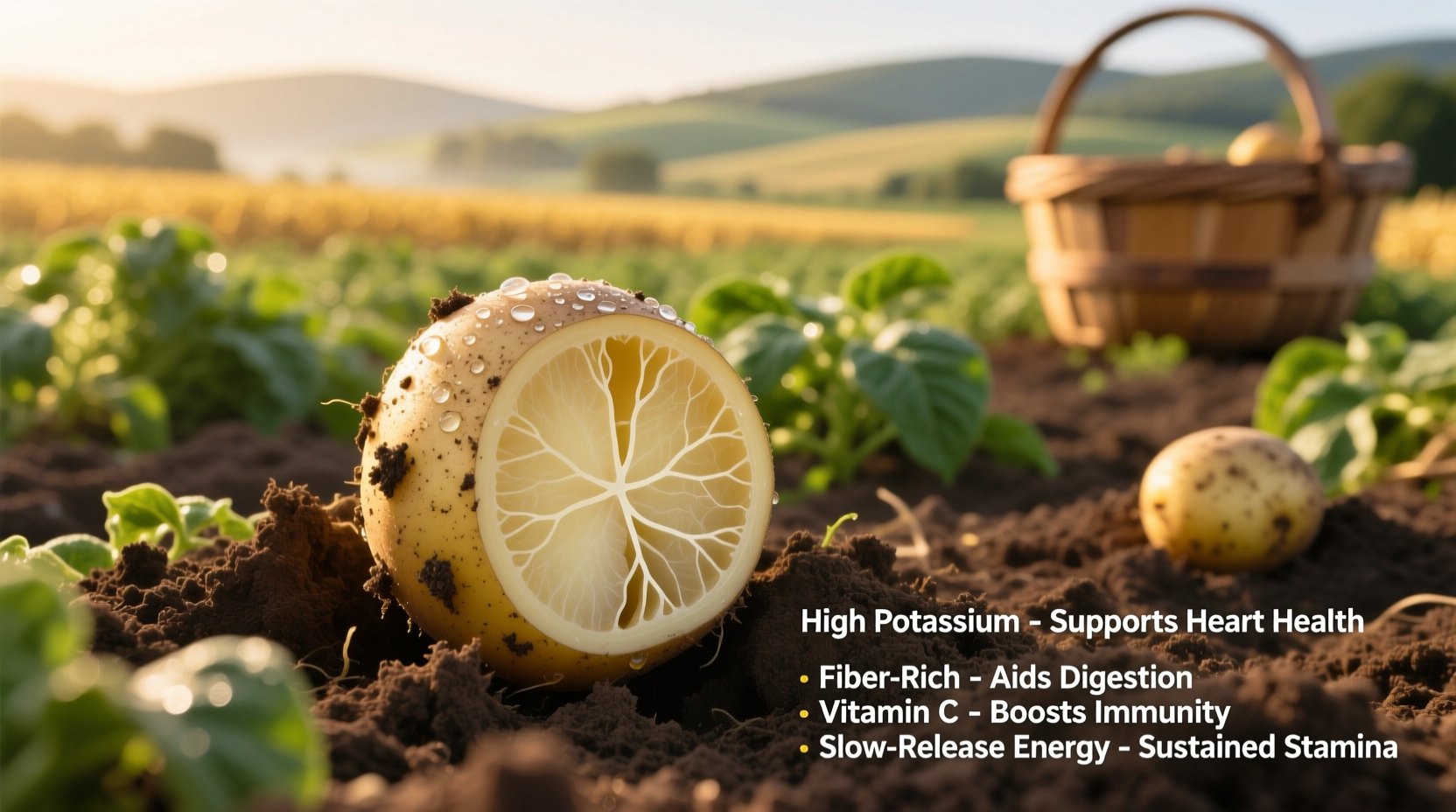Discover why this humble tuber deserves a prime spot on your plate. Beyond their comforting taste and culinary versatility, potatoes offer scientifically-backed health advantages that most people overlook. Whether you're managing blood pressure, boosting immunity, or seeking sustained energy, understanding the complete nutritional profile of potatoes can transform how you approach daily meals.
Nutritional Powerhouse in Every Serving
Contrary to popular belief, potatoes rank among the most nutrient-dense vegetables available. A single medium potato (150g) with skin delivers remarkable nutritional value without excessive calories. Let's examine the core components that make potatoes a dietary asset:
| Nutrient | Amount per Medium Potato | Daily Value % | Key Functions |
|---|---|---|---|
| Calories | 110 | 5% | Energy provision |
| Vitamin C | 27mg | 30% | Immune support, collagen synthesis |
| Potassium | 620mg | 15% | Blood pressure regulation, muscle function |
| Fiber | 2.5g | 10% | Digestive health, satiety |
| Vitamin B6 | 0.4mg | 20% | Metabolism, brain health |
Data sourced from USDA FoodData Central demonstrates that potatoes outperform many trendy superfoods in essential nutrient density. The skin alone contains nearly half the fiber content, making unpeeled preparation optimal for maximum benefit.
Science-Backed Health Advantages
Cardiovascular Protection Through Potassium Power
With 620mg of potassium per serving, potatoes rank among the top vegetable sources of this crucial mineral. Research published in the American Heart Association's journal confirms that adequate potassium intake counteracts sodium effects and reduces blood pressure. Populations consuming potassium-rich diets show up to 24% lower stroke risk according to longitudinal studies.
Gut Health Enhancement via Resistant Starch
The cooling process after cooking transforms potato starch into resistant starch, a prebiotic fiber that feeds beneficial gut bacteria. A 2017 clinical trial demonstrated that consuming cooled potatoes increased butyrate production by 30%, strengthening the gut barrier and reducing inflammation. This effect peaks at 24 hours post-cooling, making meal prep timing crucial for maximum benefit.

Immune System Support Through Vitamin C
While citrus fruits dominate vitamin C discussions, one medium potato provides 30% of your daily requirement—more than a tomato or green pepper. This antioxidant protects cells from damage while enhancing iron absorption from plant sources. During winter months when fresh produce options diminish, potatoes serve as a reliable vitamin C source to maintain immune function.
Maximizing Potato Benefits: Practical Preparation Guide
How you prepare potatoes dramatically impacts their nutritional value. Follow these evidence-based techniques to unlock maximum health benefits:
- Cook with skin intact - Retains fiber and nutrients that concentrate near the surface
- Cool after cooking - Increases resistant starch content by up to 70% when refrigerated for 24 hours
- Pair with healthy fats - Olive oil or avocado enhances absorption of fat-soluble vitamins
- Avoid excessive processing - Baking or steaming preserves nutrients better than frying
- Combine with iron-rich foods - Vitamin C in potatoes boosts iron absorption from leafy greens and legumes
Addressing Common Misconceptions
Several persistent myths undermine potato's nutritional reputation. Let's examine the facts:
Myth: Potatoes cause unhealthy blood sugar spikes
Reality: When consumed with protein and fat, and especially when cooled, potatoes have a moderate glycemic index. The fiber and resistant starch content slows glucose absorption significantly.
Myth: Sweet potatoes are always healthier than white potatoes
Reality: Both offer unique benefits. White potatoes provide more potassium and vitamin C, while sweet potatoes excel in vitamin A. Variety matters more than choosing one exclusively.
When Potato Benefits Have Limits
While generally beneficial, potatoes have specific context boundaries to consider:
- Individuals with diabetes should monitor portions and pair with protein/fat to moderate blood sugar response
- Fried preparations negate health benefits through added fats and calories
- Green or sprouted potatoes contain solanine and should be avoided
- Rare nightshade sensitivities may cause inflammation in susceptible individuals
Understanding these parameters ensures you reap maximum benefits while avoiding potential drawbacks. The key lies in preparation methods and dietary context rather than avoiding potatoes altogether.
Practical Integration Into Daily Eating
Transform your approach to potatoes with these simple strategies:
- Replace refined grains with cooled potato salad for lunch to boost resistant starch intake
- Add diced potatoes to vegetable soups for natural thickening and added nutrients
- Create balanced meals by pairing roasted potatoes with grilled fish and dark leafy greens
- Use mashed potatoes as a vehicle for incorporating pureed cauliflower or spinach
- Prepare potato hash with onions, peppers, and eggs for a nutrient-dense breakfast option
These practical applications demonstrate how potatoes can enhance rather than detract from a health-conscious eating pattern. The key lies in preparation methods and dietary context rather than avoiding this nutrient-rich vegetable.











 浙公网安备
33010002000092号
浙公网安备
33010002000092号 浙B2-20120091-4
浙B2-20120091-4